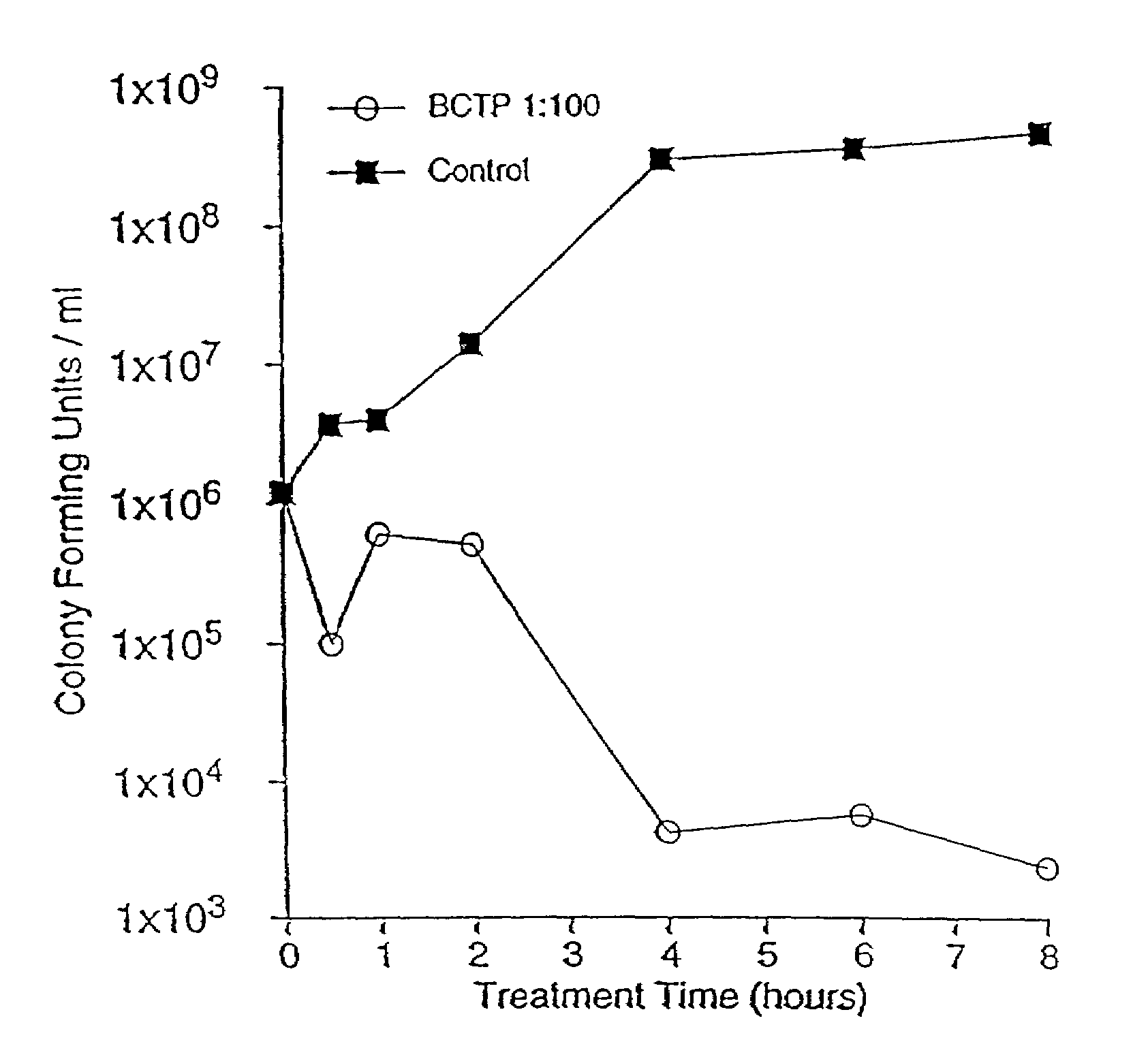Antimicrobial nanoemulsion compositions and methods
a technology of nanoemulsions and compositions, applied in the direction of drug compositions, biocide, heterocyclic compound active ingredients, etc., can solve the problems of human infection, animal anthrax infection still represents a significant problem, rapid onset of pulmonary form, etc., and achieve the effect of safe ingested human consumption, morbidity and mortality, and reducing infectivity
- Summary
- Abstract
- Description
- Claims
- Application Information
AI Technical Summary
Benefits of technology
Problems solved by technology
Method used
Image
Examples
experimental examples
V. Experimental Examples
[0259]The following examples serve to illustrate certain preferred embodiments and aspects of the present invention and are not to be construed as limiting the scope thereof.
[0260]In the experimental disclosure which follows, the following abbreviations apply: eq (equivalents); μ (micron); M (Molar); μM (micromolar); mM (millimolar); N (Normal); mol (moles); mmol (millimoles); μmol (micromoles); nmol (nanomoles); g (grams); mg (milligrams); μg (micrograms); ng (nanograms); L (liters); ml (milliliters); μl (microliters); cm (centimeters); mm (millimeters); μm (micrometers); nM (nanomolar); ° C. (degrees Centigrade); and PBS (phosphate buffered saline).
example 1
Methods of Formulating Emulsions
[0261]The emulsion is produced as follows: an oil phase is made by blending organic solvent, oil, and surfactant and then heating the resulting mixture at 37-90° C. for up to one hour. The emulsion is formed either with a reciprocating syringe instrumentation or Silverson high sheer mixer. The water phase is added to the oil phase and mixed for 1-30 minutes, preferably for 5 minutes. For emulsions containing volatile ingredients, the volatile ingredients are added along with the aqueous phase.
[0262]In a particular embodiment, the emulsion was formed as follows: an oil phase was made by blending tri-butyl phosphate, soybean oil, and a surfactant (e.g., TRITON X-100) and then heating the resulting mixture at 86° C. for one hour. An emulsion was then produced by injecting water into the oil phase at a volume / volume ratio of one part oil phase to four parts water. The emulsion can be produced manually, with reciprocating syringe instrumentation, or with b...
example 2
Characterization of an Exemplary Bacteria-Inactivating Emulsion of the Present Invention as an Emulsified Liposome Formed in Lipid Droplets
[0266]A bacteria inactivating emulsion of the present invention, designated X8W60PC, was formed by mixing a lipid-containing oil-in-water emulsion with BCTP. In particular, a lipid-containing oil-in-water emulsion having glycerol monooleate (GMO) as the primary lipid and cetylpyridinium chloride (CPC) as a positive charge producing agent (referred to herein as GMO / CPC lipid emulsion or “W808P”) and BCTP were mixed in a 1:1 (volume to volume) ratio. U.S. Pat. No. 5,547,677 (herein incorporated by reference in its entirety), describes the GMO / CPC lipid emulsion and other related lipid emulsions that may be combined with BCTP to provide the bacteria-inactivating oil-in-water emulsions of the present invention.
PUM
| Property | Measurement | Unit |
|---|---|---|
| mean particle size | aaaaa | aaaaa |
| area | aaaaa | aaaaa |
| area | aaaaa | aaaaa |
Abstract
Description
Claims
Application Information
 Login to View More
Login to View More - R&D Engineer
- R&D Manager
- IP Professional
- Industry Leading Data Capabilities
- Powerful AI technology
- Patent DNA Extraction
Browse by: Latest US Patents, China's latest patents, Technical Efficacy Thesaurus, Application Domain, Technology Topic, Popular Technical Reports.
© 2024 PatSnap. All rights reserved.Legal|Privacy policy|Modern Slavery Act Transparency Statement|Sitemap|About US| Contact US: help@patsnap.com










